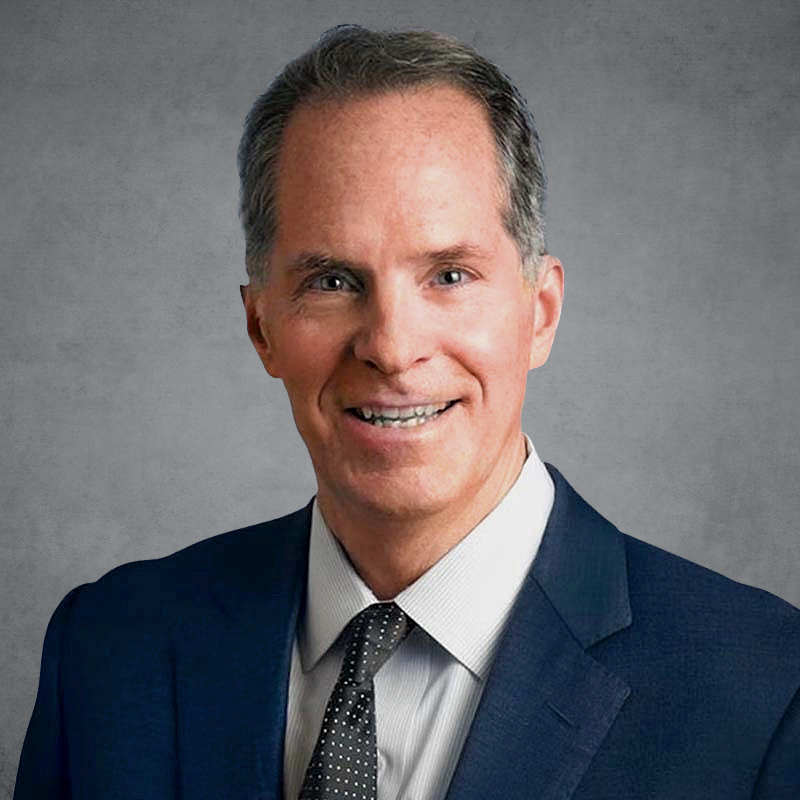What's in It for Me: Meeting Demand and Managing Change for Transformational Enterprise Solutions


Executive Perspectives
AI is possibly the most powerful technology since the internet, but we’re still in the foothills of what is possible with this set of tools. In big enterprises, most of whom are experimenting with AI, we’re just beginning to see companies scratching the surface of potential benefits.
Missing opportunities for next-level growth is unacceptable – which means leaders must strike the balance of managing risk and unlocking capacity for future value creation as they consider AI and other technology. Transformational technology requires organization-wide buy-in from stakeholders who might be resistant to change. Companies that can successfully integrate these complex solutions, while navigating internal buy-in and maintaining focus on core business goals, are in an enviable position as we progress in this new age.
RECOGNIZING AI CHALLENGES TO BUSINESS
AI is rapidly transforming industries as businesses embrace early tools and deliver significant value in areas such as customer service, marketing, legal, and even software engineering. Some estimates suggest that within the next five years, AI could assist in writing up to 95% of code. However, while this technological revolution brings excitement and opportunity, it also raises critical questions about workforce impact, control, governance, and implementation, issues causing CEOs to proceed with caution.
AI pilots have required less human effort than traditional work – which means the people implementing AI solutions may be displaced. In some companies, that people question is slowing down implementation as employees are naturally concerned about their livelihoods.
Leaders also face concern because the thinking process, so critical to their business strategies, risks being outsourced completely. Instead of spending an afternoon preparing a speech, for example, ChatGPT can produce one in a few minutes. Self-learning AI, similarly, is an intriguing but worrying trend to many leaders as this variant is more likely to surpass human intelligence by teaching itself rather than going back to data to learn. Leaders are left contending with to what extent they lose the real thinking and value add that humans bring.
There are further costs to AI that CEOs must remain cognizant of, including the energy consumption of large LLMs, which is estimated to add an extra 14 gigawatts of new power requirements by 2030. Those responsible for implementing AI must know when they should be leveraging these high-powered tools instead of other, less energy-intensive queries.
OVERCOMING DECISION PARALYSIS
Even at the start, CEOs and CIOs face challenges in acquiring AI since there is too much choice in the market. Every piece of software and technology they are considering has an AI story to it, and finding a way to triage and prioritize the wall of companies presenting themselves as the answer is critical but demanding. They end up considering the whole market while trying not to create too many new processes simultaneously.
Leaders, then, are tasked with managing these challenges, experimenting with innovative tools and engaging their employees while choosing AI solutions that are as agile as possible – since needs for this emerging technology can evolve, quickly. They are looking for layered, modular solutions that have the flexibility to draw on all their data sources and are future-proofed in how they are built.
As a result, leaders can spend years reviewing the market and the available options, essentially procrastinating on selecting a partner and a way forward. Enterprise technology sales can take a long time, with some estimates that deals above $100,000 – which most large businesses are likely considering – can take nearly six months to sign.
In the face of this decision paralysis, it is better to start experimenting with a few AI applications without locking oneself into a solution without an exit route. From trialing different point solutions to identify the features that are important to rolling out more advanced solutions with key influencers within the organization, leaders can find ways to bring new technologies forward as a learning experience for the business.
TAKING A VERTICAL, MODULAR APPROACH TO TECHNOLOGY
It’s always been difficult to find a software solution that works across every use case, but big enterprises are now looking for modular applications so the benefits of large software implementations can be realized with minimal customization.
The key change we’ve seen the big SaaS providers like Salesforce, Workday and ServiceNow moving toward is the shift to provide more vertical solutions rather than horizontal ones. These vertically oriented niche solutions are taking advantage of the flexibility of cloud technology and open APIs. These building blocks make it possible for leaders to acquire technology that is much more designed around their business and operations without losing the scale and flexibility of horizontal solutions.
We’re seeing solutions that meet the needs of large enterprises gain traction. For example, Writer – a generative AI platform – has caught on with a vertical solution that trains on a more efficient data set relevant to the query involved, which has the added benefit of saving energy.
These leading companies are taking horizontal solutions and verticalizing them for a particular category which is unlocking value for their clients. For example, SAP is increasingly creating vertical-specific clouds based on the SAP platform, while Salesforce is using the same, generic Sales Cloud solution to make specific versions for finance, CPG, automotive and other industries. This strategy enables technology companies to compete with point-to-point solutions that are built on standard components.
When it comes to selection, leaders must find resilient, forward-looking tools that give them control over data and have the latest cloud and security technology. Solutions must also be structured in a way that companies retain the ability to change them in the future to meet their needs. Some providers in the market are practically impossible to remove from the business once implemented, so leaders must also ask how future-oriented the technology is, how frequently leaders can change it, if they can remove and retain data, and if they can replace it with something else. These questions are just as important during the evaluation process as how much the technology costs.
FUTURE-PROOF WITH OOTB SOLUTIONS
When businesses are spending a lot of money on technology solutions, it is easy to fall into the trap of customizing those solutions to meet every need. However, that customization can come with pitfalls during implementation and ongoing use. To get the full benefits of any SaaS platform, implementation is key – and it’s critical to configure the company around the software as opposed to customizing the software to fit the existing organization. That’s the difference between good and great implementation: the great ones recognize it is better to be on standard, out-of-the-box software that doesn’t require customization with every change rather than something built around a process that will soon be outdated.
Bespoke solutions also lead to questions for upgrading, including how easy technology is to change, how often the company gets upgrades and the cost of change moving forward. A lot of the big software providers today offer upgrades 2-3 times per year that often require implementation support – sometimes because of the over-customization of previous versions.
In the energy industry, Kraken is software designed to enable clean, fast migrations that take months instead of years. This platform allows customers to make hundreds of changes in a day with a huge amount of flexibility in how changes get implemented – features that are critical for Kraken’s customers who are seeing many changes to their core assumptions daily. This approach is in contrast to many existing providers that are effectively hard-coded. If you’re a large, multinational, there are major limitations to your business if agility isn’t built into your tech infrastructure.

Leaders spend a lot of time on the “what” of technology, but the “why” is key to building commitment.
- Gavin Patterson | Senior Advisor
Leaders must also take the step to redesign their organization around software, creating a new operating model and forcing the benefits through the company. This universal approach creates a 360-degree view of customers that drives satisfaction for customers and employees alike. When Kraken is implemented with a new operating model, for example, it operates at 40% less cost compared to other platforms.
Whether integrating new technology through tiger teams or company-wide rollouts, leadership for implementation has to come from the top. When implementation is delegated down to middle management, the solution can become overly configured as project leads use customization to get buy-in from across the organization. The broader business has inertia to do things the way they’ve always been done in the absence of direction from the top. The CEO must signal that with new technology comes a new way of doing business, because if employees aren’t using it the right way, they are not driving change, they are hindering the benefits of the new technology and they are slowing progress toward transformation – all of which harm the bottom line.
NO TURNING BACK FROM TECHNOLOGY
Leaders spend a lot of time on the “what” of technology, but the “why” is key to building commitment. They need to ensure that this question of priority and benefit is not assumed just because the technology decision has been made clear. It’s the CEO’s responsibility to explain why this implementation is important and why it will lead to better, healthier and more sustainable business moving forward.
Perhaps the biggest challenge leaders must contend with in this arena is that the implementation of any of these SaaS platforms leads to the displacement of people. Getting buy-in is difficult if anyone – the board, executive team, middle management and particularly individual contributors – sees jobs at risk. Leaders can mitigate these challenges by creating a pathway to future employment for affected workers.
For example, Salesforce created Trailhead, an extensive online learning platform that allows anybody to become accredited in using Salesforce. We noticed that there was a shortage of people who knew how to use Salesforce, which was a downside of implementation. We created Trailhead as an exit point that allowed people to continue to learn and upskill for job opportunities moving forward. We’ve had more than 20 million Trailblazers qualify through Trailhead – employees who are now advocates for the technology with customers.
Leaders must also be finding ways to experiment with AI, including deploying basic tools throughout the business and ensuring colleagues across the organization have the confidence to use them irrespective of their role. While certain positions might naturally gravitate toward AI, leaders must also consider how to ensure there aren’t segments within the company that get left behind since soon, employees will need to know how to use AI – the same way they are expected to be able to read or write. With this experimentation, business will achieve benefits even when they are not expecting them.
There is no turning back when it comes to accelerating technology within organizations – doing so is a disaster for everyone. The most important thing leaders can do is choose solutions with future flexibility built in. They must understand their solution and how to get the most out of it while always moving forward instead of reversing.
I’m certain that just as we knew before there is no organization that can’t be changed by software, there is no organization that can’t be changed by AI. And if companies don’t do it on their own, someone else will do it to them.
The views and opinions expressed herein are solely those of the individual authors and do not necessarily represent those of The Consello Group. Consello is not responsible for and has not verified for accuracy any of the information contained herein. Any discussion of general market activity, industry or sector trends, or other broad-based economic, market, political or regulatory conditions should not be construed as research or advice and should not be relied upon. In addition, nothing in these materials constitutes a guarantee, projection or prediction of future events or results.
























